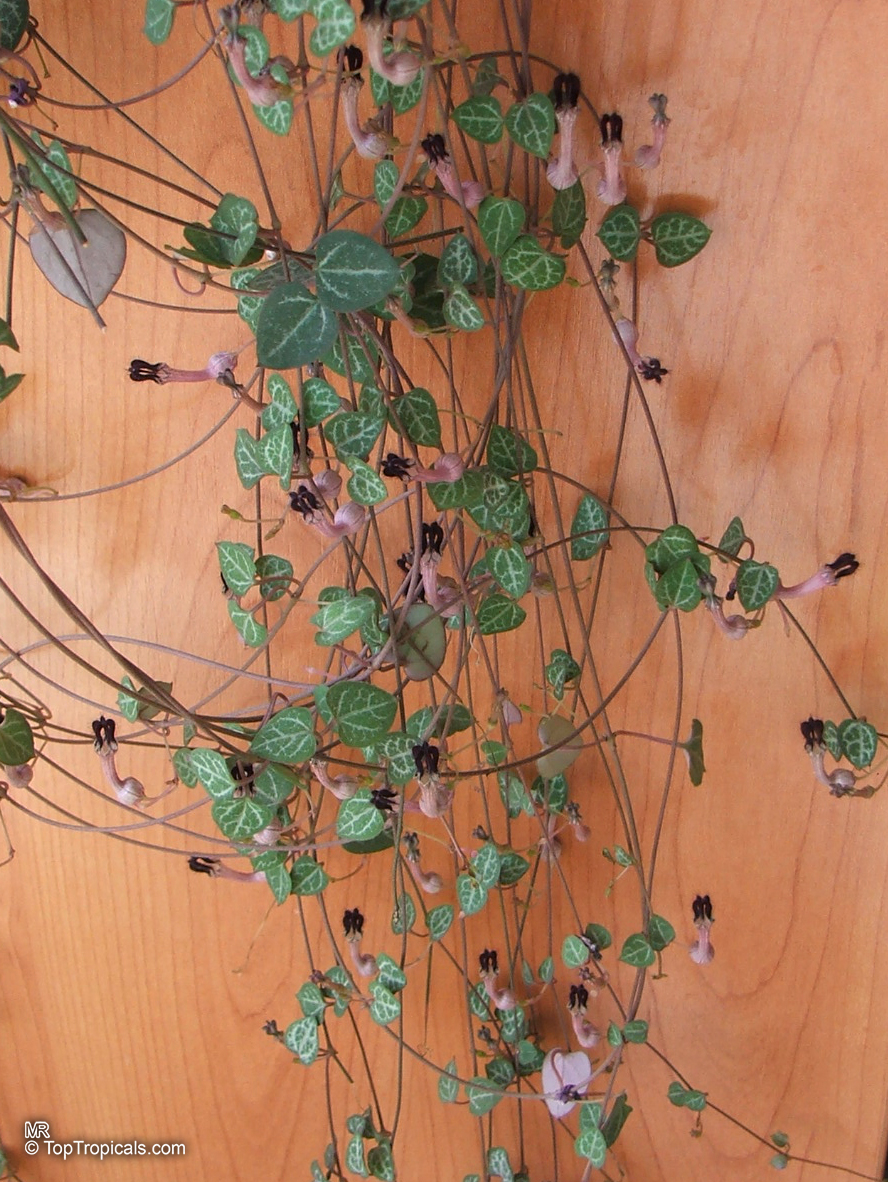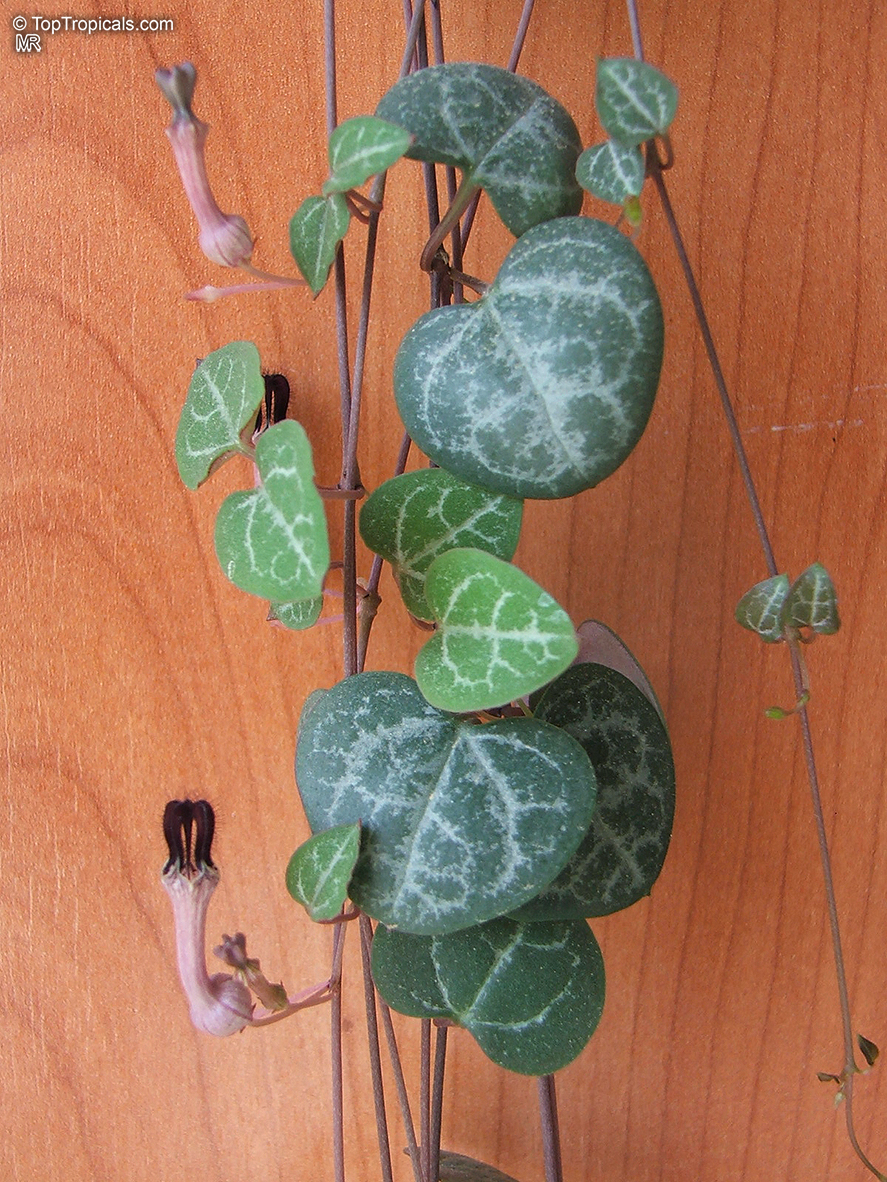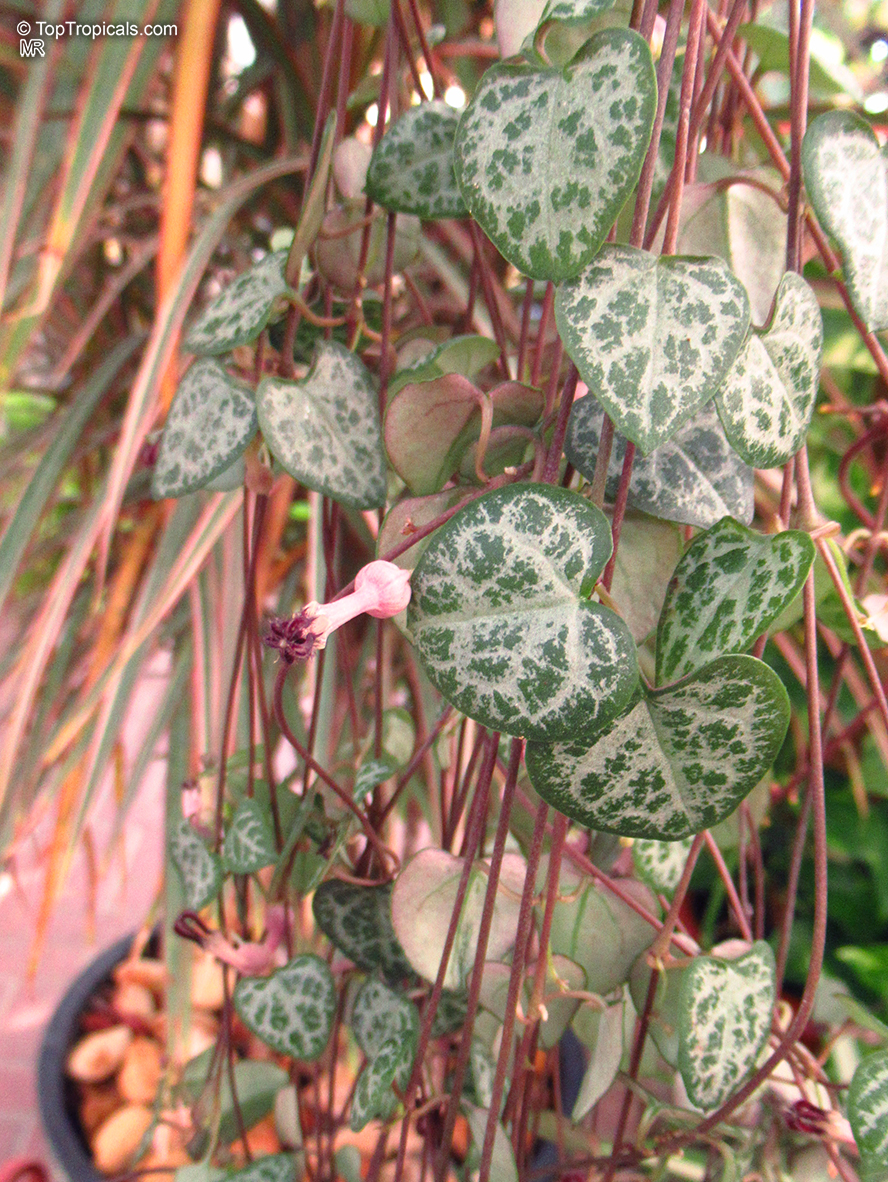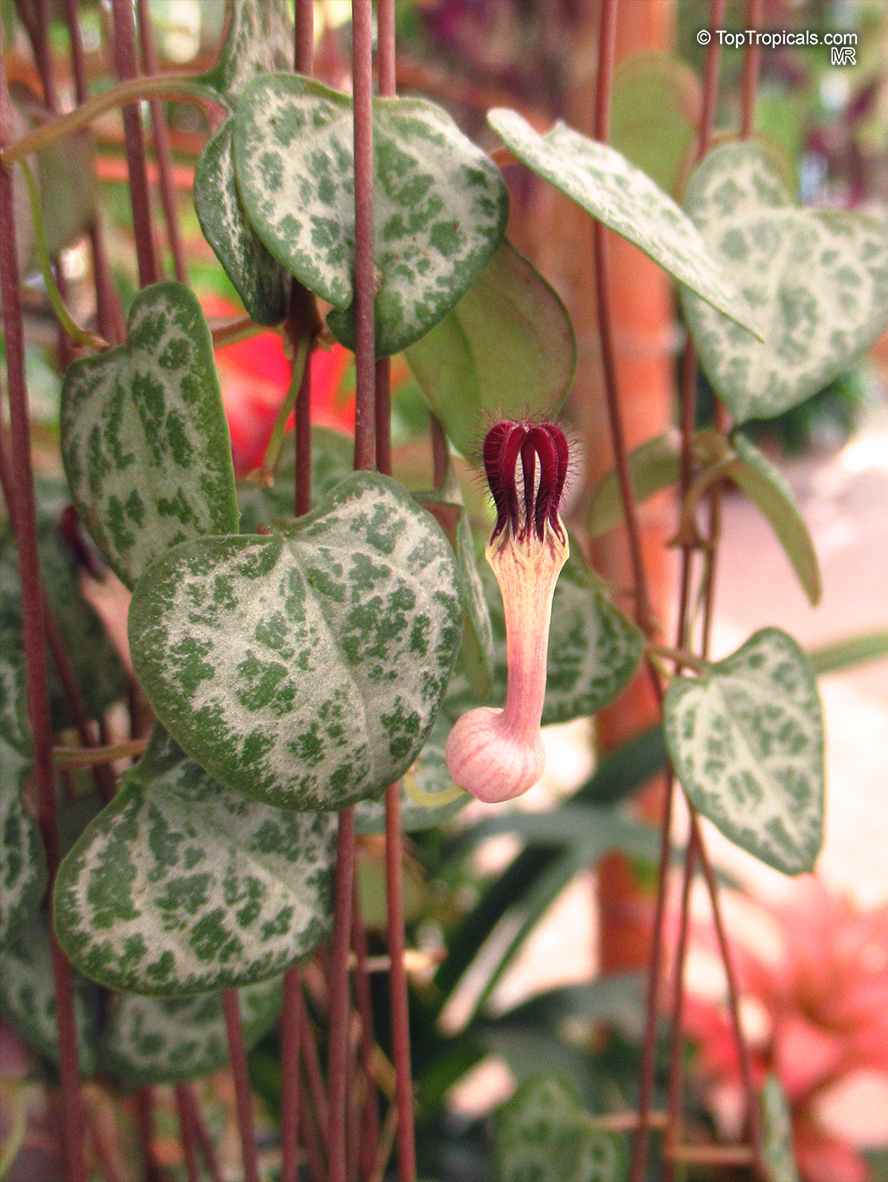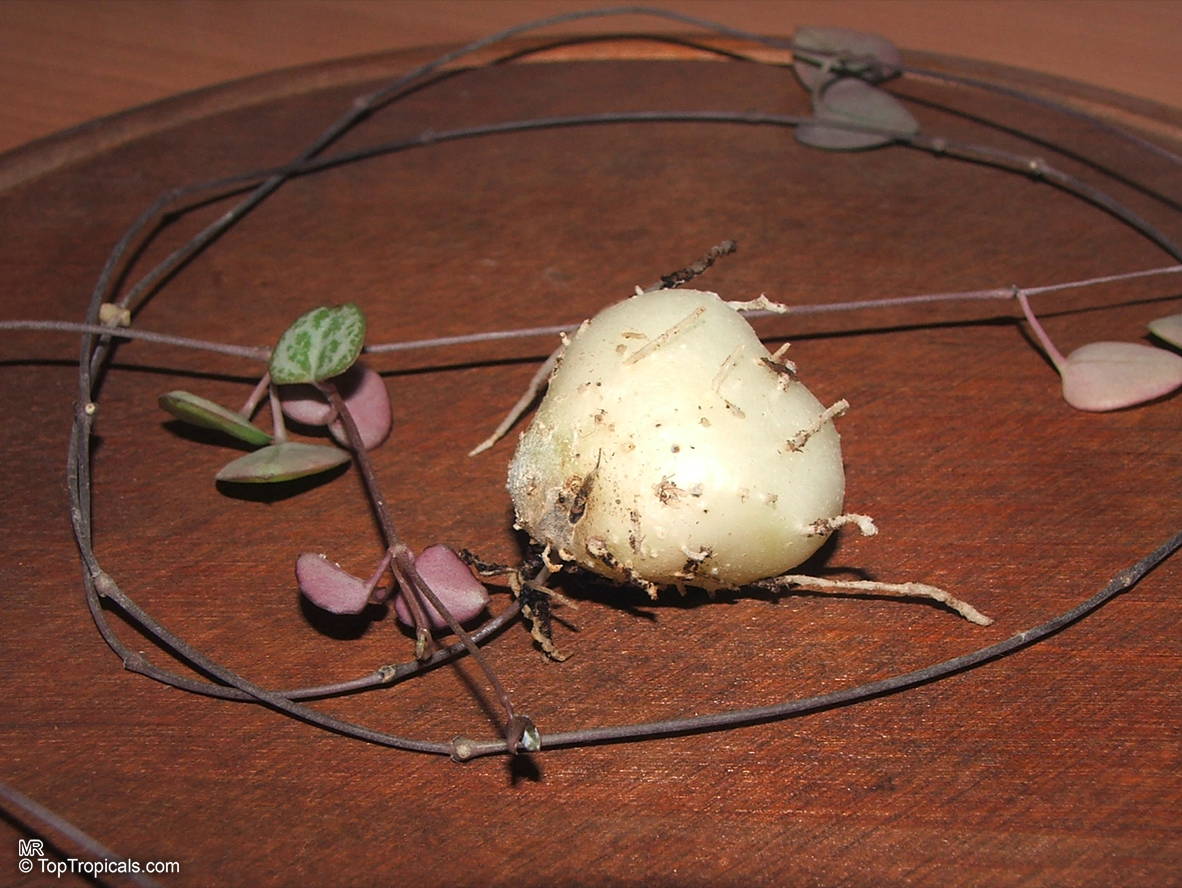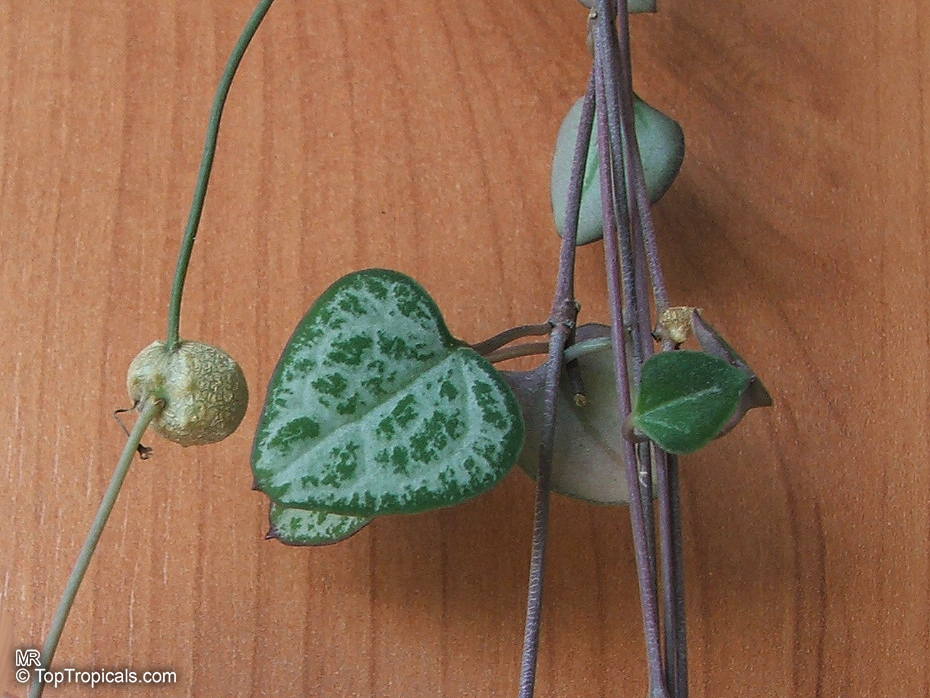Ceropegia woodii (Rosary Vine)
Top Tropicals Plant Encyclopedia
Botanical names: Ceropegia woodii, Ceropegia linearis subsp. woodii
Common names: Rosary Vine, Chain of hearts
Family: Apocynaceae (Formerly:Asclepiadaceae)
Subfamily: Asclepiadoideae
Origin: Southeastern Africa






The Rosary Vine (Ceropegia woodii) is an exceptionally unique and beautiful plant, featuring thin and wire-like vines with marbled, heart-shaped leaves and ornamental foliage. This plant is best suited for hanging or being placed atop a pedestal, in a spot that receives bright light for the majority of the day. During the summer months, it prefers temperatures of around 70-75°F and in winter, should be kept in a cooler room with temperatures at 60-65°F.
Since the Rosary Vine is somewhat succulent, it's important to pay careful attention to watering, so as not to overdo it or let it sit in water. It should be thoroughly watered, and then allowed to dry out completely before watering again. In addition, when repotting in early spring, a porous potting soil with coarse sand added is ideal to ensure adequate drainage. During the plant's growing season in spring and summer, an all-purpose liquid houseplant food diluted to half strength should be applied once a month.
Another special feature of the Rosary Vine are its delicate purple-barred, inverted-vase flowers. These draw in hummingbirds when placed outdoors during the summer months. Furthermore, 'beads' form along the stem at the leaf base, which can be planted and uprooted to create new plants. When planting it's best to keep the tubers moist (but not wet). In colder regions, the plant should be kept indoors, in a bright and well-ventilated area, free of drafts. When temperatures are cooler, water sparingly every 5 to 7 days, allowing the soil to dry out fully between waterings. During the summer, it can be grown outdoors in warmer climates but will benefit from being placed in a semi-shaded spot or filtered sun to prevent sunburn. With consistent care, this unique and striking plant will bring beauty and energy to any home.
